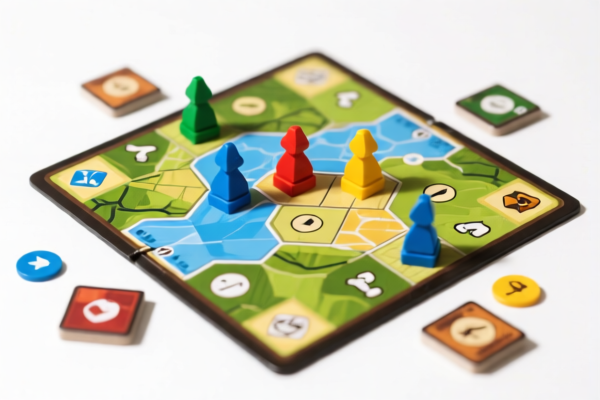| HS Code | Official Doc | Tariff Rate | Origin | Destination | Effective Date |
|---|---|---|---|---|---|
| 9504906000 | Doc | 30.0% | CN | US | 2025-05-12 |
| 9504500000 | Doc | 30.0% | CN | US | 2025-05-12 |
| 9403999061 | Doc | 55.0% | CN | US | 2025-05-12 |
| 9403999045 | Doc | 105.0% | CN | US | 2025-05-12 |
| 9504208000 | Doc | 37.5% | CN | US | 2025-05-12 |




Here is the structured classification and tariff information for your declared product "board games" based on the provided HS codes and tax details:
✅ HS CODE: 9504906000
Product Description:
- Board games, board game sets, puzzle board game sets, Game of Thrones: The Board Game, etc.
- Includes chess sets and their accessories.
Tariff Information:
- Base Tariff Rate: 0.0%
- Additional Tariff (before April 11, 2025): 0.0%
- Additional Tariff (after April 11, 2025): 30.0%
- Special Notes:
- No anti-dumping duties or special tariffs on iron/aluminum apply.
- Time-sensitive alert: Tariff increases to 30.0% after April 11, 2025.
Proactive Advice:
- Verify if the product is a complete board game set or just a component (e.g., a single board or piece).
- Confirm whether any certifications (e.g., safety, age rating) are required for import.
✅ HS CODE: 9504500000
Product Description:
- Gambling table games (e.g., casino-style games).
Tariff Information:
- Base Tariff Rate: 0.0%
- Additional Tariff (before April 11, 2025): 0.0%
- Additional Tariff (after April 11, 2025): 30.0%
- Special Notes:
- No anti-dumping duties or special tariffs on iron/aluminum apply.
- Time-sensitive alert: Tariff increases to 30.0% after April 11, 2025.
Proactive Advice:
- Confirm the nature of the game (e.g., whether it's for commercial gambling or recreational use).
- Be aware of any local regulations regarding gambling-related products.
⚠️ HS CODE: 9403999061
Product Description:
- Table tops (e.g., parts of tables used for board games).
Tariff Information:
- Base Tariff Rate: 0.0%
- Additional Tariff (before April 11, 2025): 25.0%
- Additional Tariff (after April 11, 2025): 30.0%
- Special Notes:
- This code is for furniture parts, not the game itself.
- Time-sensitive alert: Tariff increases to 30.0% after April 11, 2025.
Proactive Advice:
- Ensure the product is not misclassified as a table top if it's intended for use with board games.
- Check if the table top is made of any restricted materials or requires special documentation.
⚠️ HS CODE: 9403999045
Product Description:
- Table frames (e.g., metal parts of tables used for board games).
Tariff Information:
- Base Tariff Rate: 0.0%
- Additional Tariff (before April 11, 2025): 25.0%
- Additional Tariff (after April 11, 2025): 30.0%
- Special Notes:
- Steel and aluminum products are subject to an additional 50% tariff.
- Time-sensitive alert: Tariff increases to 30.0% after April 11, 2025.
Proactive Advice:
- Confirm the material of the table frame (e.g., steel, aluminum, or other).
- Be aware of the 50% additional tariff for steel and aluminum products.
✅ HS CODE: 9504208000
Product Description:
- Billiard cues (e.g., pool sticks), accessories for billiard tables.
Tariff Information:
- Base Tariff Rate: 0.0%
- Additional Tariff (before April 11, 2025): 7.5%
- Additional Tariff (after April 11, 2025): 30.0%
- Special Notes:
- No anti-dumping duties or special tariffs on iron/aluminum apply.
- Time-sensitive alert: Tariff increases to 30.0% after April 11, 2025.
Proactive Advice:
- Confirm whether the product is a complete cue or just a part (e.g., tip, shaft).
- Check if any certifications (e.g., safety, quality) are required.
📌 Summary of Key Actions:
- Verify the exact product description to avoid misclassification (e.g., board game vs. table part).
- Check the material (especially for metal parts) to determine if additional tariffs apply.
- Plan for increased tariffs after April 11, 2025, and consider cost implications.
- Review required certifications for import compliance.
Let me know if you need help determining the correct HS code for your specific product.
Customer Reviews
No reviews yet.